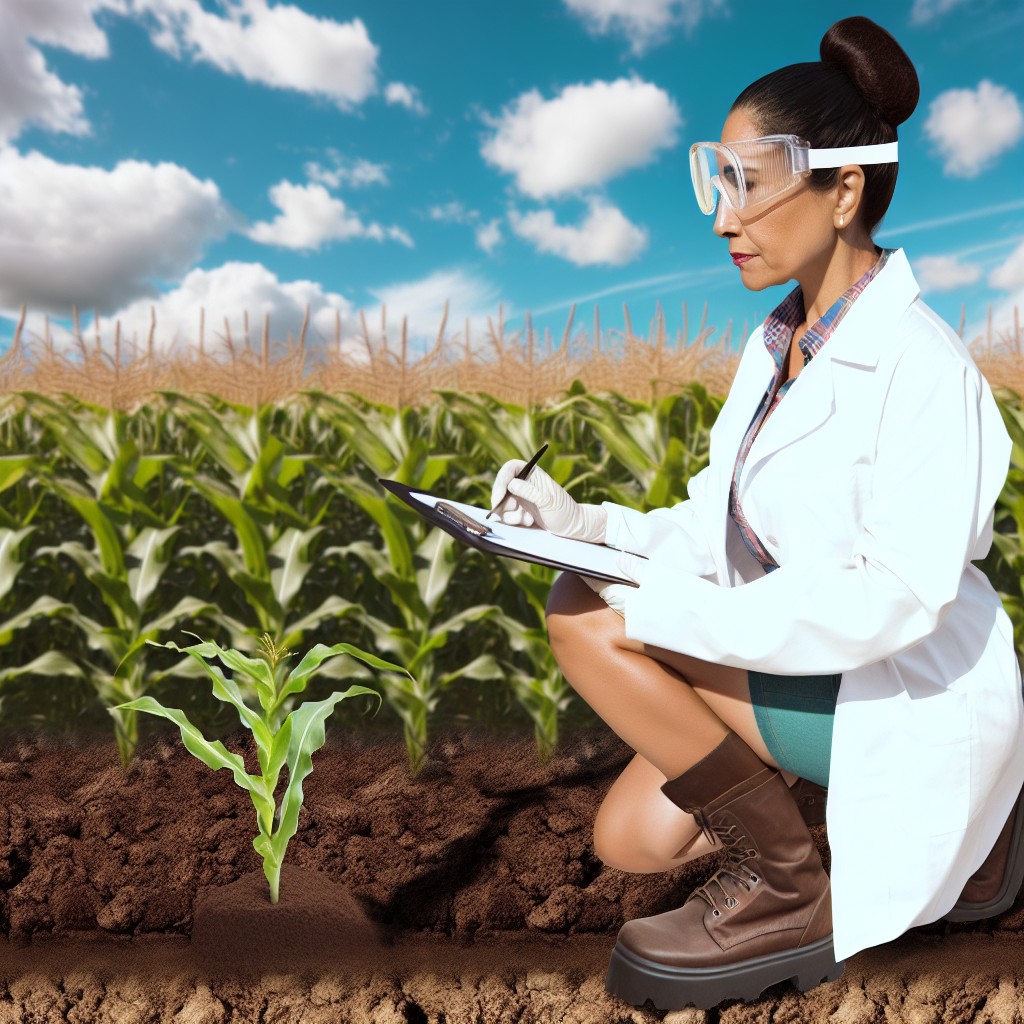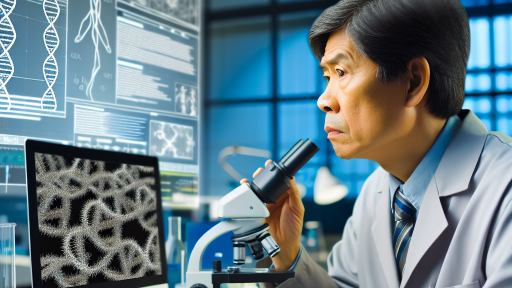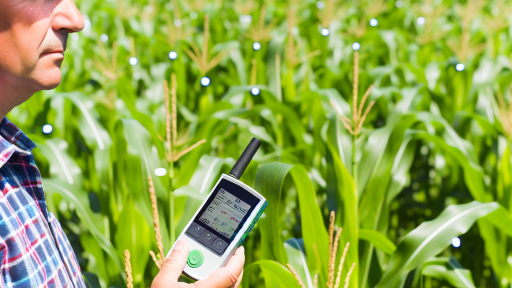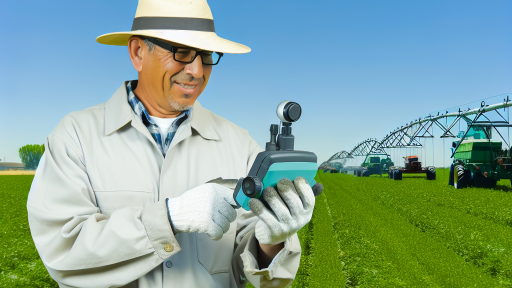Importance of Soil Health in Sustainable Agriculture
Understanding Soil Health
Soi health is crucial for sustainable agriculture.
It reflects the soil’s ability to function effectively.
Healthy soil supports plant growth and biodiversity.
Moreover, it enhances water filtration and nutrient cycling.
Impact on Crop Productivity
Healthy soil leads to higher crop yields.
It improves the resilience of crops against diseases.
Further, it enhances the efficiency of nutrient uptake.
As a result, farmers enjoy better returns on their investments.
Environmental Benefits
Maintaining soil health contributes to environmental sustainability.
It reduces soil erosion and degradation.
Additionally, healthy soils help sequester carbon.
This action mitigates climate change effects.
Economic Viability
Farmers benefit financially from healthy soils.
They face less need for chemical fertilizers and pesticides.
This reduction lowers overall farming costs significantly.
Transform Your Agribusiness
Unlock your farm's potential with expert advice tailored to your needs. Get actionable steps that drive real results.
Get StartedMoreover, healthy soil promotes long-term agricultural practices.
Social and Community Benefits
Healthy soils contribute to sustainable communities.
They support local food systems and economies.
This approach fosters community engagement in agriculture.
Ultimately, it ensures food security for future generations.
Overview of Advanced Soil Monitoring Technologies
Introduction to Soil Health Monitoring
Soil health monitoring is vital for sustainable agriculture.
It ensures that soils retain fertility and support crop growth.
Advanced technologies offer farmers precise solutions.
Types of Advanced Soil Monitoring Technologies
Multiple soil monitoring technologies exist today.
Each technology serves different agricultural needs.
- Remote sensing technology provides aerial insights.
- Soil sensors deliver real-time data on moisture and nutrients.
- Geographic Information Systems (GIS) map soil characteristics.
Benefits of Using Advanced Technologies
Implementing these technologies enhances soil management practices.
Farmers can optimize their input use effectively.
As a result, they experience higher yield and lower costs.
- Real-time data assists in timely decision-making.
- Continuous monitoring addresses potential issues quickly.
- Data analytics help predict soil health trends.
Challenges in Adoption
While advantages are clear, challenges exist in adoption.
Training and education are essential for effective use.
Many farmers face financial constraints in upgrading technology.
- Initial costs can be high for advanced systems.
- Additionally, technical support may be limited.
Case Studies of Successful Implementation
Several farms have successfully integrated these technologies.
For instance, GreenField Farms uses drones for soil mapping.
This method has increased their crop yields significantly.
Another example is Oak Hill Agronomy, using soil sensors.
Their outputs improved through data-driven decision-making.
Remote Sensing Applications for Soil Analysis
Introduction to Remote Sensing
Remote sensing provides vital insights into soil health.
This technology utilizes satellite and aerial imagery.
Farmers can monitor their fields from a distance.
Showcase Your Farming Business
Publish your professional farming services profile on our blog for a one-time fee of $200 and reach a dedicated audience of farmers and agribusiness owners.
Publish Your ProfileIt reduces the need for physical soil sampling.
Types of Remote Sensing Techniques
There are several remote sensing techniques available today.
Each technique has unique advantages for soil analysis.
- Satellite imagery captures vast areas efficiently.
- Aerial photography offers detailed insights from low altitudes.
- LiDAR provides highly accurate topographical data.
Soi Property Assessment
Remote sensing can assess various soil properties.
It evaluates moisture content and nutrient levels effectively.
Additionally, it identifies soil texture and organic matter.
This information aids in precision agriculture practices.
Mapping Soil Variability
Remote sensing helps map soil variability across fields.
Farmers gain insights into spatial differences in conditions.
This information is crucial for targeted interventions.
- The mapping process enhances crop yield.
- It minimizes environmental impact through precise applications.
Combining Remote Sensing with Other Technologies
Integrating remote sensing with other technologies amplifies benefits.
For example, coupling it with GIS enhances data analysis.
The combination facilitates informed decision-making for farmers.
Moreover, drone technology can complement satellite data.
Challenges and Limitations
Despite its benefits, remote sensing faces challenges.
Weather conditions can affect data quality significantly.
Furthermore, interpretation of data requires expertise.
Investments in technology can also be a barrier for some farmers.
Learn More: Farm Management Software: Streamlining Daily Farming Operations
Soil Moisture Sensors: Types and Benefits
Introduction to Soil Moisture Sensors
Soil moisture sensors play a vital role in modern agriculture.
They provide real-time data on soil moisture levels.
This information assists farmers in making informed irrigation decisions.
Types of Soil Moisture Sensors
Capacitive Sensors
Capacitive sensors measure the dielectric constant of the soil.
This technique is non-destructive and offers reliable readings.
They are also less affected by soil salinity.
Resistive Sensors
Resistive sensors measure the electrical resistance of the soil.
These sensors can be cost-effective for small-scale farms.
However, they are prone to corrosion and require regular maintenance.
Time Domain Reflectometry (TDR)
TDR sensors use electromagnetic waves to measure moisture levels.
They offer high accuracy and are excellent for research purposes.
Nonetheless, TDR sensors can be expensive for everyday use.
Benefits of Soil Moisture Sensors
Water Conservation
Soil moisture sensors help optimize irrigation practices.
This results in significant water savings over time.
Farmers can avoid overwatering or underwatering crops.
Enhanced Crop Health
By monitoring moisture levels, farmers can promote healthier crops.
Consistent moisture leads to improved plant growth.
Moreover, it helps in preventing stress that affects yield.
Cost Efficiency
Investing in soil moisture sensors reduces operational costs.
They enable more efficient use of water resources.
In the long run, this investment pays off with increased yields.
Showcase Your Farming Business
Publish your professional farming services profile on our blog for a one-time fee of $200 and reach a dedicated audience of farmers and agribusiness owners.
Publish Your ProfileData-Driven Decisions
Soil moisture sensors provide valuable data for farmers.
This data can be integrated into comprehensive farm management systems.
Consequently, farmers can make informed decisions based on real-time data.
Delve into the Subject: Implementing Controlled Environment Agriculture on Your Farm
Microbial Analysis Technologies for Soil Health Assessment
Overview of Microbial Analysis
Microbial analysis evaluates the diversity and activity of soil microorganisms.
This analysis plays a crucial role in assessing soil health.
It helps identify the biological functions that support plant growth.
Importance of Microbial Diversity
Microbial diversity is vital for maintaining soil ecosystem stability.
A diverse microbial community enhances nutrient cycling in the soil.
Moreover, it increases the resilience of soils against environmental stressors.
Common Microbial Analysis Techniques
Several techniques are available for microbial analysis.
Below are some widely used methods:
- DNA Sequencing: This advanced method identifies different microbial species.
- Metagenomics: It provides a comprehensive view of microbial communities.
- qPCR: This quantitative approach measures specific microbial populations.
- Biolog: This method assesses the metabolic profiles of soil microorganisms.
Case Studies of Successful Applications
Researchers like Dr. Emily Harper have implemented microbial analysis in agricultural practices.
Her studies demonstrate how microbial analysis improves soil health management.
Another example includes the collaboration with Green Earth Farms.
This partnership showcased the benefits of adding microbial inoculants to enhance soil productivity.
Future Trends in Microbial Analysis Technologies
Emerging technologies will further improve microbial analysis capabilities.
For instance, advancements in artificial intelligence will assist in data interpretation.
Additionally, portable soil testing devices will provide real-time monitoring on-site.
These innovations will enhance decision-making in sustainable agriculture.
Explore Further: Sustainable Harvesting Techniques Leveraging Advanced Technologies
The Role of GIS in Soil Health Monitoring
Introduction to GIS
Geographic Information Systems (GIS) empower farmers to make informed decisions.
This technology integrates various data sources for better analysis.
Farmers can visualize soil health across their fields efficiently.
Data Collection and Analysis
GIS facilitates the collection of spatial data on soil properties.
It allows for the mapping of nutrients, pH levels, and soil composition.
Farmers can track changes in soil health with time-series data.
Benefits of Using GIS
GIS enhances precision agriculture practices significantly.
It supports targeted interventions, lowering input costs and improving yields.
- Improved understanding of spatial variability
- Effective resource management
- Increased productivity and sustainability
Challenges in GIS Adoption
Despite its benefits, there are challenges in GIS implementation.
Some farmers lack training in using GIS tools effectively.
Additionally, high initial costs may deter adoption among smallholders.
Future Trends in GIS for Soil Monitoring
The future of GIS in agriculture looks promising.
Emerging technologies will further enhance soil health monitoring capabilities.
Integrating remote sensing data will provide even greater insights.
Discover More: Sustainability In Agriculture Through Blockchain Supply Chains

Integrating Soil Health Data with Precision Agriculture Techniques
Importance of Soil Health Monitoring
Soi1 health directly affects agricultural productivity.
Healthy soil enhances crop yield and quality.
Moreover, it reduces dependency on chemical fertilizers.
Regular soil monitoring provides critical insights.
Showcase Your Farming Business
Publish your professional farming services profile on our blog for a one-time fee of $200 and reach a dedicated audience of farmers and agribusiness owners.
Publish Your ProfilePrecision Agriculture: A Game Changer
Precision agriculture utilizes data-driven approaches.
It optimizes management practices for better results.
This technique focuses on efficient resource usage.
It minimizes waste and environmental impact.
Collecting Data for Analysis
Advanced sensors enable real-time soil data collection.
Technologies like drones and soil probes enhance accuracy.
These tools gather essential data points for analysis.
Parameters like moisture, pH levels, and nutrient content matter.
Integrating Data with Management Systems
Farm management software integrates various data inputs.
This unification aids in informed decision-making.
Farmers can tailor their practices based on insights.
As a result, they can respond to changes effectively.
Utilizing Precision Techniques for Soil Health
Variable rate technology applies treatments based on data.
This method ensures optimal input application across fields.
It addresses specific soil health needs uniquely.
Consequently, this leads to improved crop performance.
Benefits of Integrated Approaches
Combining soil health monitoring and precision agriculture offers advantages.
- Enhanced crop yield through precise management.
- Cost savings on inputs and resources.
- Improved environmental sustainability.
Farmers who adopt this integrated approach thrive.
They achieve both economic and ecological sustainability.
Case Studies: Successful Implementation of Soil Health Technologies in Farming
Introduction to Soil Health Technologies
Advancements in soil health monitoring have transformed agriculture.
Technological tools enable precise assessment of soil conditions.
This section explores successful case studies demonstrating their effectiveness.
Precision Agriculture at Greenfield Farms
Greenfield Farms adopted soil health technologies in 2021.
They implemented a comprehensive soil monitoring system.
This system included sensors and data analytics tools.
As a result, they improved soil nutrient management significantly.
Furthermore, they reduced fertilizer costs by 20%.
Adoption of Remote Sensing by Maple Hill Orchards
Maple Hill Orchards embraced remote sensing technology in 2022.
This technology allowed them to monitor soil moisture levels effectively.
They used aerial imagery to analyze crop health regularly.
Consequently, this led to increased yields and reduced water usage.
The orchard reported a 15% increase in overall fruit quality.
Collaboration with Tech Firms
Farmers benefit from collaborations with technology companies.
For instance, BrightAgri partnered with several local farms.
They introduced soil health kits tailored to specific crops.
This initiative enabled farmers to conduct onsite diagnostics.
As a result, farmers made more informed planting decisions.
Integration of Soil Information Systems
Many farms now integrate soil information systems into their operations.
Santa Rosa Vineyard implemented this system in 2023.
It provided real-time data on soil pH and organic matter levels.
Showcase Your Farming Business
Publish your professional farming services profile on our blog for a one-time fee of $200 and reach a dedicated audience of farmers and agribusiness owners.
Publish Your ProfileThis integration enhanced their ability to tailor fertilizer applications.
Consequently, vineyard production increased by 25% within a year.
Impacts of Soil Health Technologies
The case studies illustrate the power of innovative soil health technologies.
Each farm achieved remarkable improvements in sustainability and profitability.
Such technologies pave the way for a more resilient agricultural future.
Future Trends in Soil Health Monitoring Technologies
Integration of Artificial Intelligence
Artificial intelligence is revolutionizing soil health monitoring.
Farmers can use AI algorithms to analyze soil data efficiently.
This technology offers predictive analytics to foresee soil needs.
Moreover, machine learning optimizes crop rotation and planning.
Farmers gain insights that were previously unobtainable.
Advancements in Remote Sensing
Remote sensing technology enhances soil health assessments.
Drones equipped with sensors can monitor vast areas rapidly.
This method provides real-time data on soil conditions.
Furthermore, satellite imagery helps identify trends over time.
Such advancements ensure more precise agricultural practices.
Soil Microbiome Analysis
Understanding soil microbiomes is essential for healthy crops.
Recent technologies allow for comprehensive microbiome profiling.
This analysis can reveal the diversity and health of soil life.
It helps in creating tailored soil management strategies.
Consequently, farmers can enhance nutrient availability in soils.
Use of Sensors and IoT
Internet of Things (IoT) is becoming integral in farming.
Soil sensors collect data on moisture, temperature, and pH.
They provide continuous monitoring and timely alerts to farmers.
Overall, IoT connectivity improves decision-making processes.
Farmers can adapt quickly to changing soil conditions.
Data-Driven Insights for Decision Making
Data analytics tools are now essential for soil management.
Farmers can analyze data trends to make informed decisions.
This results in better resource allocation and reduced waste.
Moreover, data-driven farming creates sustainable practices.
Accurate insights lead to higher yields over time.
Additional Resources
Unveiling the Silent Threat: How Microplastics in Soil Impact Water …




